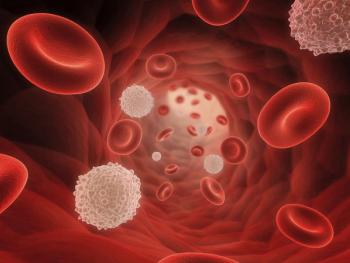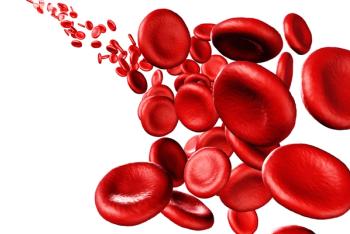
Oncology NEWS International
- Oncology NEWS International Vol 17 No 2
- Volume 17
- Issue 2
Pre-transplant rituximab improves survival in DLBCL
Use of rituximab (Rituxan) in the pre-transplant setting significantly boosts both progression-free and overall survival for patients with diffuse large B-cell lymphoma (DLBCL), without impacting engraftment or treatment-related mortality
ATLANTA-Use of rituximab (Rituxan) in the pre-transplant setting significantly boosts both progression-free and overall survival for patients with diffuse large B-cell lymphoma (DLBCL), without impacting engraftment or treatment-related mortality.
Timothy S. Fenske, MD, of the Division of Neoplastic Diseases and Related Disorders, Medical College of Wisconsin, Milwaukee, presented these findings at ASH 2007 (abstract 19) on behalf of the Center for International Blood and Marrow Transplant Research (CIBMTR).
Outcomes have substantially improved with the addition of rituximab to first-line chemotherapy regimens such as CHOP. Yet many patients are refractory to such therapy or develop recurrent disease and are candidates for autologous hematopoietic stem cell transplantation (AuHCT).
It is not known if administering rituxi-mab prior to transplant and/or during conditioning therapy affects survival and/or engraftment. If so, this might affect traditional methods of risk assessment and patient selection for AuHCT.
This trial evaluated outcomes for 1,006 patients who underwent peripheral blood AuHCT for DLBCL between 1996 and 2003. Of these patients, 188 received rituximab prior to AuHCT (+R) while 818 did not (–R).
The two groups did not differ significantly except that the +R group had more patients age 61 or older (40% vs 23%, P < .001) and that the majority of the +R group (96%) underwent transplant between 1999 and 2003, while the majority of the –R group (93%) underwent transplant in 1996-2001 (P < .001).
For patients in the +R group, the majority (94%) received rituximab only with pre-transplant chemotherapy; 3% received the agent only in conjunction with conditioning therapy and 3% both as pre-transplant and conditioning therapy.
Progression-free survival was significantly improved in the +R group, compared with the –R group, at 1 year (62% vs 49%, P = .002) and at 3 years (49% vs 38%, P = .010). Overall survival was also significantly longer in the rituximab arm at both timepoints (68% vs 60% at 1 year, P = .032; 57% vs 45% at 3 years, P = .003) (see Figure). Improved overall survival was associated with use of pre-transplant rituximab, age less than 55, year of transplant (2000 to 2003), and fewer than three lines of chemotherapy.
Importantly, univariate analysis showed no significant differences in neutrophil or platelet engraftment between the two treatment groups.
"Everyone was concerned that using rituximab in the pre-transplant setting was causing engraftment problems for patients, but this did not show up in the study," said co-investigator Julie M. Vose, MD, of the University of Nebraska Medical Center, Omaha. In addition, she pointed out, no differences were seen in treatment-related mortality at 1, 3, and 5 years. "This regimen is now generally accepted as the standard of care for treatment of this disease," she said.
Articles in this issue
almost 18 years ago
NLST article not balanced, critic of screening trial assertsalmost 18 years ago
M.D. Anderson and AstraZeneca form neuropathic pain alliancealmost 18 years ago
Good nilotinib responses in imatinib-resistant AP-CMLalmost 18 years ago
Virus linked to Merkel cell carcinomaalmost 18 years ago
Benefit of adjuvant RT/CT for pancreatic ca affirmedalmost 18 years ago
Recurrence Score helps select node+ pts for chemoalmost 18 years ago
For resectable liver mets: Preop chemotherapy or not?almost 18 years ago
Plerixafor boosts stem cell mobilization in myeloma ptsalmost 18 years ago
MRI shows second-hand smoke damagealmost 18 years ago
Assay has high sensitivity for hard-to-detect SLN metsNewsletter
Stay up to date on recent advances in the multidisciplinary approach to cancer.
















































































